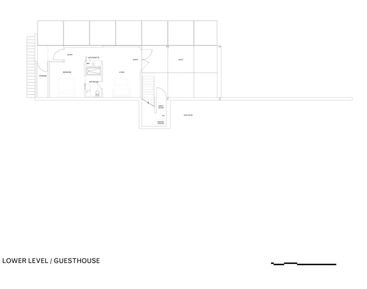C-Glass House
ARCHITECTS
Deegan Day Design
CONSTRUCTION TEAM
Morita Construction
PAINTING
Decarli Painting, Rich
MANUFACTURERS
Bendheim, Fleetwood, Kawneer, Lamberts, Durocit
PAINTING
Decarli Painting, Rich Decarli
CONSTRUCTION TEAM
Morita Construction
ROOF SAFETY ACCESS
Henris Roofing, Steve Henris
EXECUTIVE ARCHITECT
Dave Maynard Architecture
GENERAL CONTRACTOR
Ken Morita, Matt Curley
DRYWALL
Tsarnas Drywall, John Tsarnas
PROJECT ENGINEER
Greg Marin
GRADING AND SEPTIC
Furlong Brothers, Kevin Furlong
STRUCTURAL STEEL
Banks Welding, Doug Banks
ROOFING
Henris Roofing, Steve Henris
PLUMBING
Basil Scott, Scott's Plumbing
ELECTRICAL
Sherlock Electric, Tom Sherlock
SHOWER DOORS ARCH'S GLASS
Rick Stewart
DESIGN TEAM
Joe Day, Taiyo Watanabe, Yo Oshima, Noel Williams, Sonali Patel, Mark Lyons,
Bonnie Solmssen, Felicia Martin, Garo Hachigian
RADIANT HEAT
Warm Zone
PHOTOGRAPHS
Taiyo Watanabe
AREA
2100 ft²
YEAR
2014
LOCATION
Dillon Beach, United States
CATEGORY
Houses
Text description provided by architect.
Set on a remote site with sweeping coastal views, C-Glass House poses an abstract counterpoint to its daunting natural surroundings.
Designed for a client who once helped Phillip Johnson mount a Mies van der Rohe retrospective at MoMA, the project is an exercise in high-performance transparency - a home of maximal exposure with minimal environmental impact.
The C-Glass House is a 2100sf retreat in northern California. Set on a spectacular but periodically wind-swept site, the C-Glass House opens to a panoramic view of Tomales Bay and the open ocean, while bracing against winds that approach 100mph from multiple directions.
The design engages not only Philip Johnson’s Glass House and the Farnsworth House by Mies van der Rohe (the client helped translate texts for Mies’ 1972 retrospective at MoMA), but also the California legacies of Elwood, Koenig and others.
In contrast to earlier ‘vitrines in a garden,’ west coast glass houses bias towards the environment, employing tactics of framing, cantilever and directional enclosure to heighten, as well as quantify, the beauty of their surroundings.
C-Glass House brokers between the Leica-like precision of high modern glass houses and the cinematic wideframe of the Case Study generation.
Though its architectural lineage is self-evident, this glass house is as indebted to artists’ explorations of glazed enclosures as it is to the precedents of Johnson and Mies.
Larry Bell’s elevated cubes and Dan Graham’s many pavilions capitalize more on the reflective and refractive ambiguities of the medium than its transparency, as do mirrored works by Gerhard Richter and the aquarium-like cages of Damien Hirst.
The C-Glass House bridged between these ambitions in a new way, opening up to a panoramic vista but also modulating and reflecting back on architecture’s evolving role in the American landscape.














